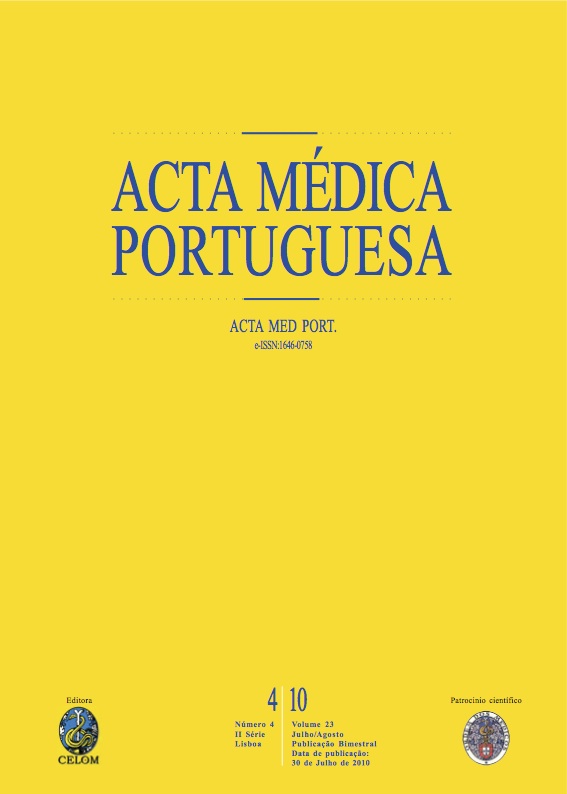Mielinólise pôntica e extrapôntica.
DOI:
https://doi.org/10.20344/amp.682Resumo
INTRODUCTION: Myelinolysis is defined as acute demyelinating disorder, associated with flaccid quadriplegia, speech and swallowing impairment. The pathogenesis is usually related to hydroelectrolytic imbalance, particularly with severe hyponatremia and its rapid correction. The imagiologic diagnostic is commonly done by magnetic resonance imaging. AIM: The authors present a clinical case focusing on the follow up, rehabilitation program, and giving importance to functionality gains. The main clinical intercurrences related to the late diagnosis are also reported. CLINICAL CASE: A female patient with documented past psychiatric history and polidipsia was admitted with repeated seizures unsuccessfully controlled by drugs. Hyponatremia was identified and corrected. After the correction, a quadriplegia and a generalized hypotonia were noticed and the patient underwent magnetic resonance imaging. The imaging findings were consistent with the diagnosis of central pontine and extrapontine myelinolysis.Downloads
Downloads
Como Citar
Edição
Secção
Licença
Todos os artigos publicados na AMP são de acesso aberto e cumprem os requisitos das agências de financiamento ou instituições académicas. Relativamente à utilização por terceiros a AMP rege-se pelos termos da licença Creative Commons ‘Atribuição – Uso Não-Comercial – (CC-BY-NC)’.
É da responsabilidade do autor obter permissão para reproduzir figuras, tabelas, etc., de outras publicações. Após a aceitação de um artigo, os autores serão convidados a preencher uma “Declaração de Responsabilidade Autoral e Partilha de Direitos de Autor “(http://www.actamedicaportuguesa.com/info/AMP-NormasPublicacao.pdf) e a “Declaração de Potenciais Conflitos de Interesse” (http://www.icmje.org/conflicts-of-interest) do ICMJE. Será enviado um e-mail ao autor correspondente, confirmando a receção do manuscrito.
Após a publicação, os autores ficam autorizados a disponibilizar os seus artigos em repositórios das suas instituições de origem, desde que mencionem sempre onde foram publicados e de acordo com a licença Creative Commons









